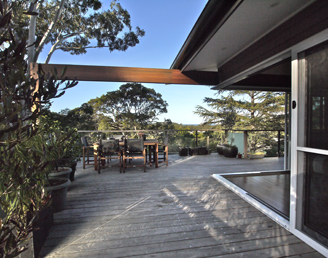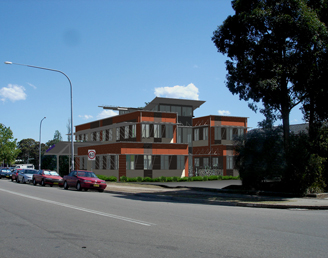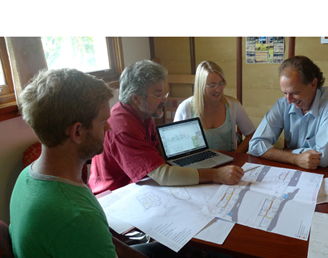PassivHaus for warm climates
Posted by admin on 18/02/2016 at 8:03 pm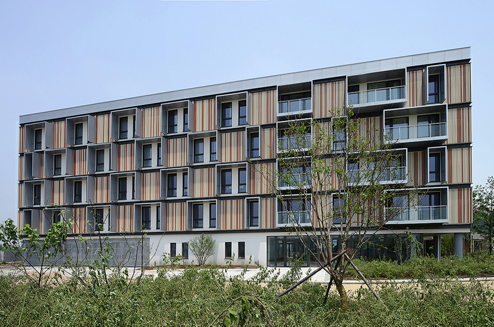
We recently attended the Australian Passive House Association conference in Melbourne in an attempt to discover whether PassivHaus is appropriate to warmer climates such as coastal Sydney and further north.
What is PassivHaus?
PassivHaus is arguably the world’s most prescriptive building standard. It requires all certified buildings to meet minimum a standard for heating energy, cooling energy, energy use and air tightness.
Achieving the standard requires all buildings to model their performance using the comprehensive Passive House Planning Package (PHPP); a 30-plus sheet spreadsheet that takes into account all building components to a level of detail that will scare most Australian designers, engineers and builders.
Due to the detail entered into the PHPP and its rigorous development over the years, including calibration with actual buildings, the evidence shows that it is a highly accurate predictor of performance. This is would not come as a surprise to those with a working knowledge of Australia’s current NatHERS rating system.
Air Tightness
Air tightness is a topic that is gaining currency in some areas of the Australian industry but is poorly understood by most, and daunting to industry generally, and especially contractors.
The air tightness discussion is the most commonly given reason why PassivHaus is inappropriate to the warmer parts of Australia. There is a commonly held belief that, as a nation, we love the indoor-outdoor lifestyle and that sitting inside a hermetically sealed box is somehow un-Australian.
Is this true? Air conditioning use has increased disproportionately when compared to the changes we have seen so far in climate. While some clients are accepting of fluctuating temperature ranges throughout the year, many are not, and PassivHaus provides a consistently comfortable, energy efficient solution for all.
While no quality data exists on the air tightness of Australian buildings, it is estimated that they may experience from 15-60 Air Changes per Hour (ACH). PassivHaus requires buildings to achieve an air tightness of 0.6ACH. That’s up to a thousand times less leaky!
Can I open my windows?
The provision of fresh air becomes a major concern in a tightly sealed building. PassivHaus remedies this using highly efficient heat recovery ventilation (HRV) systems; ‘dirty’ air is exhausted from the building and 100% fresh filtered air bought in but the warmth or coolth of the exiting air is transferred via a heat exchanger to the incoming air without the air bodies mixing to ensure that energy is not lost.
It is commonly perceived that PassivHaus demands windows be continually closed; but this is not the case. Elrond Burrell, a UK PassivHaus expert, provided various examples of school buildings he has designed where the opening and closing windows is common place and often beneficial to overall building performance.
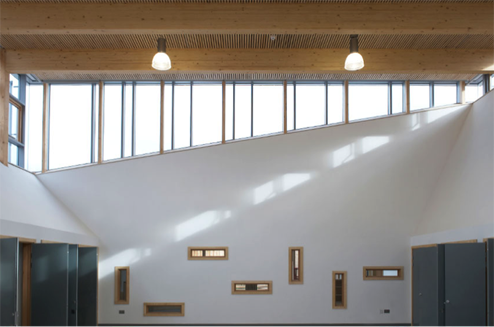 The Willows Primary & Special School by Architype
The Willows Primary & Special School by Architype
http://www.architype.co.uk/project/the-willows-primary-special-school/
Australians can continue to enjoy their connections to the outdoors when the weather permits it. But as is the case now, opening the doors on a 40ºC afternoon is going to have a negative impact on indoor comfort.
Many PassivHaus advocates make the point that with such great indoor air quality (temperature, humidity, freshness) that most people cease to need the ‘open door’ lifestyle. This is where debate rages, given Aussies’ love of just sitting outside. Regardless, it remains an option with PassivHaus.
What would we need to do differently?
In addition to providing more airtight buildings we would also need to reduce thermal bridging in our buildings.
Currently a well-insulated building must be allowed to breathe so that warm moist air transferring through the building fabric does not get trapped in the walls and roof where it can degrade the insulation material and form mould, which will ultimately spread to the interior having serious health impacts.
Creating an airtight building with conventional materials and systems, warm moist internal air cannot pass through the building fabric. However, thermal bridging will allow the warmth to pass through the walls and roof via various building elements, e.g. steel studwork. Somewhere between inside (at say 22ºC) and outside (at say. 9ºC) the dew point will occur (where water vapour condenses to form water droplets) , causing condensation to form. It will also increase heat conduction ..
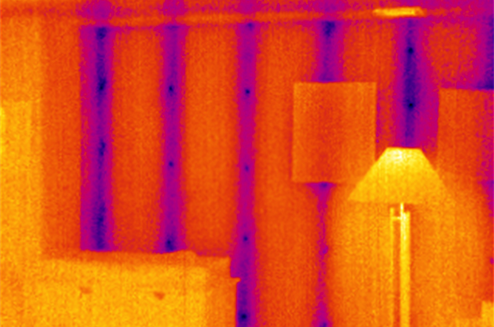 Thermal bridging shown in a thermal image taken by an infra-red camera.
Thermal bridging shown in a thermal image taken by an infra-red camera.
Providing an esky-like continuous insulation layer over the entire building can eliminate thermal bridging. This will involve insulation across the entire face of walls, not just in the leftover spaces between framing. It also means the industry will need to take seriously the need to insulate the edges of concrete floor slabs.
Less Thermal Mass?
One consistent feature in the PassivHaus buildings presented at the conference was the lack of thermal mass inside the insulation layer. A hyper airtight, super-insulated building with HRV has much less need to retain heat within its fabric if it sits in a cool to cold climate. Is this equally true in a warm or hot climate? This question is being debated with increasing enthusiasm!
The PassivHaus approach may turn on its head the long held believe that large amounts of thermal mass are necessary for a high performance building in a Sydney climate. After all, the premise has been that even when well insulated the building still leaks considerable energy hence the need for the thermal mass to hold on to a greater amount of energy so we can lose it later through our building fabric. But what about Brisbane, or Cairns, or Darwin?
Is PassivHaus viable in Sydney and further north?
We are fortunate that our benign climate reduces the need for our buildings to work hard to keep us comfortable. However it might not be too much of a stretch to say that many Sydney residents would be more comfortable, for most of the year, living in a tent rather than their current hot and cold box.
For those seeking more stable temperatures such as the elderly, schools and offices, PassivHaus presents a great opportunity to give high levels of internal comfort with very low energy bills.
Success in the single residential sector will hinge on whether airtight, thermal bridge-free buildings can be built at a cost that is comparable to plastering your well-orientated roof with PV to offset higher energy use.
What is yet to be proven one way or the other is whether the extra embodied energy has an ecological or financial payback in the more benign climate zones, such as NSW north coast, and Queensland’s Bundaberg coast. Here, winters are short and mild, and near the coast (where the big populations are) most summer days get a cooling breeze. All in all, that tent makes a lot of sense here.
Perhaps not so in Darwin, where an increasing number of people are relying on air conditioning for comfort, at least in the ‘build-up’ and wet seasons. Long time residents aside, it is not unusual for short termers (who make up a sizeable percentage of the population, such as transient defense and resource personnel) to rely on air con for nine months of the year, or more. Here the PassivHaus principles, work in reverse: keep the cold in, heat out, manage condensation that would form on the outside of building envelope.
Quality
As the industry battles with the paucity of quality control, clients continue to seek reassurance that they are getting what they need, and what they paid for. The attention to detail required to achieve the air tightness and energy performance of a certified PassivHaus will bring peace of mind to consumers and focus the attention of contractors. As the recent Pitt & Sherry report found, the current NatHERS regime operating in a largely privatised certification framework has failed to match actual and predicted performance. PassivHaus provides that much needed certainty.
As in Europe, PassivHaus will offer greater efficiency in multi-residential buildings. Much larger volume to area ratios means less envelope to seal and insulate. Lesser need for heat gain would give better performing south facing units, and there would be some interesting challenges to NSW’s SEPP65 design requirements if comfort can be shown to be delivered through very different design solutions.
Regardless of the sector, we need to overcome the poor quality of our doors and windows, building sealing, and quality control – but these challenges exist already and must be addressed whether we all embrace PassivHaus or not. PassivHaus is a good tool in the box to get us along the path to healthy, efficient and comfortable buildings. As always, the work of a few will help the many.
This article first appeared in The Fifth Estate.
Sustainable House Design
We will help you create a family home that works well, feels good, is kind to the environment, culturally appropriate and reduces your energy and running costs.
Read MoreSustainable Commercial Buildings
We design your building to help reduce your operating costs, optimize the life cycle of your building, increase your property value and increase employee productivity.
Read MoreWorking with Envirotecture
We design beautiful, sustainable buildings that work for you, your family or your business. Full range of building design, consulting and training services.
Read More
